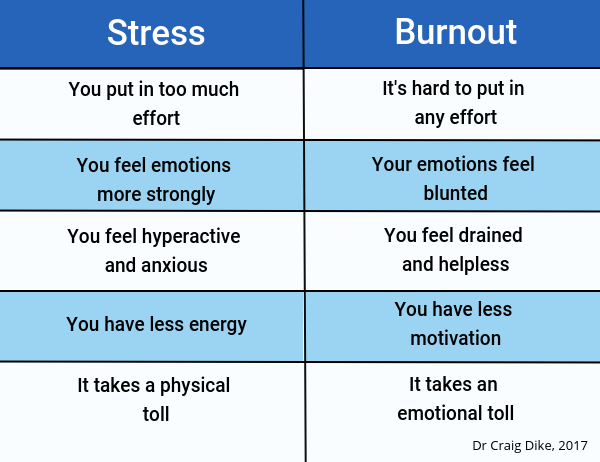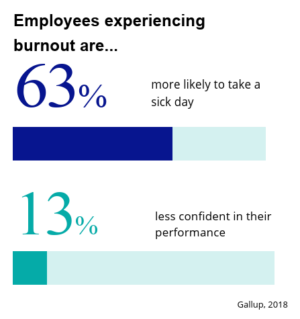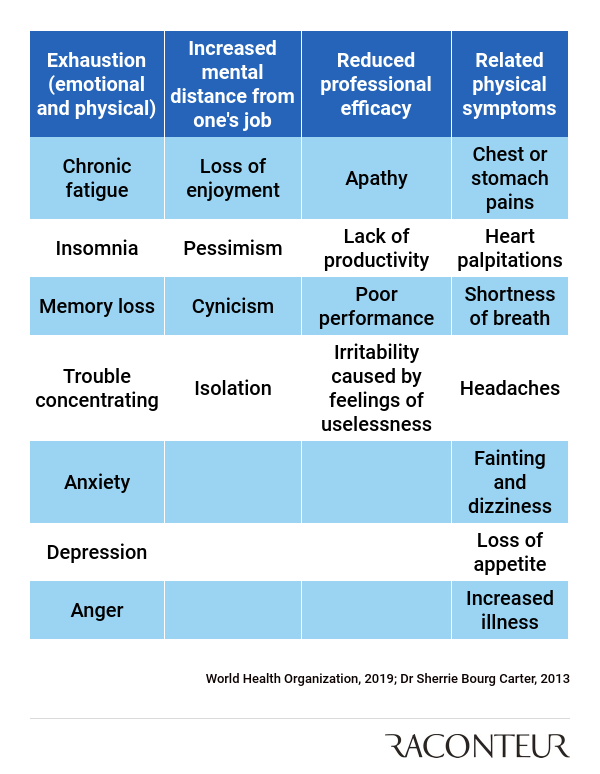Can burnout kill you, lead to anxiety, or last for years? Can it cause depression, insomnia, memory loss, physical pain, nausea or panic attacks? According to research tool, Answer the Public, these are some of the most common questions people ask Google around job burnout. We may not fully understand what burnout is, but we certainly are worried about it.
I had serious heart palpitations when I was getting ready for work one day, and that’s when I realised my lifestyle wasn’t sustainable
And perhaps we should be. A 2018 Gallup study concluded that 23 per cent of employees very often feel burned out at work, with an additional 44 per cent feeling burned out some of the time. It is becoming so common that, in May 2019, the World Health Organization officially classified burnout as an “occupational phenomenon”.
As the rhythm of our work life shifts and the number of cases of mental ill-health continues to rise, recognising the signs of job burnout - and knowing how to respond - has never been more important.
Am I burnt out? How to recognise the signs
So, how do you know if you are burnt out or are, at the very least, experiencing some of the symptoms of burnout?
Job burnout is characterised by physical and emotional exhaustion, detachment, and a feeling of ineffectiveness. When it comes to your work, you might start to find tasks you previously enjoyed extremely dull or totally overwhelming. You might feel less creative, more cynical or pessimistic, and start dreading coming to work each day.
There can be physical symptoms as well, from fatigue and chest pains, to shortness of breath, dizziness or a loss of appetite. For Angela Armstrong, founder and owner of leadership development firm Armstrong, the physical manifestations of her job burnout were what finally prompted her to stop and re-assess the pressure she was putting herself under. “I had serious heart palpitations when I was getting ready for work one day, and that’s when I realised my lifestyle wasn’t sustainable.”
Just after winning an award for being the highest performing change manager for one of the UK’s largest professional services companies, Ms Armstrong had a mental and physical collapse. “In hindsight, I had been totally ignoring the signs. I had constant headaches and was always exhausted - I found it hard to wake up and then hard to fall asleep, which I would remedy with coffee to wake me up and wine in the evening to wind down.”
Find a full list of burnout symptoms here
What causes burnout?
Ms Armstrong’s experience is not uncommon, with her burnout being caused by a relentless build up of workplace stress. Typically, job burnout is caused by unreasonable time pressure, an overly heavy workload, a lack of support (particularly from managers), unfair treatment, or a lack of clarity around job roles and responsibilities.
Much of this can come down to individual company - or sector - culture. If your colleagues routinely work through lunch, arrive early and leave late, this becomes the rhythm of your workplace, and it can be difficult to deviate from it. Or, if praise is lavished on employees who solve work problems on their own, it can become increasingly difficult to ask for help when you are struggling.
And all of these factors are exacerbated by the destructive work habit of being “always on”. Rich Pierson, co-founder and CEO of Headspace (the online healthcare service specialising in meditation) believes that technology has erased many of our workplace boundaries, leaving us vulnerable to longer hours with no opportunity to switch off.
“Technology isn’t inherently bad, but our relationship with it can make us feel overwhelmed. We’re moving away from a binary view of our lives - it’s no longer work life versus personal life. So as we allow for more fluidity (for better or worse), we can’t ignore the need to be healthy and happy both at home and at work.”
Burnout vs Stress
How to deal with burnout
The good news is that job burnout is reversible, but it requires effort and determination to master stress management practices and make changes to your work environment.
The first step, if you believe you are experiencing burnout, is to talk to your manager, supervisor, or a member of your HR department. There remains a level of stigma attached to burnout or, indeed, any instance of mental ill-health in the workplace, but it is crucial that you seek help. “Once you peel back the stigma, you realise how common it is,” says Rob Stephenson, activist and founder of social enterprise, InsideOut. “95 per cent of the population have had some interaction with mental ill-health. This means on a structural level, organisations are starting to understand the real scale of the problem.”
We’re moving away from a binary view of our lives - it’s no longer work life versus personal life
Taking leave can also be helpful, but it’s important to note that a week’s holiday will never be enough on its own.
Following a period of absence, Ms Armstrong returned to her corporate job for three years. “Eventually, however, I realised part of the problem was me, but part was the environment. The people who excel in those corporate jobs are very good at having a handle on their own proactive resilience.”
When dealing with your own job burnout, then, a crucial question to ask yourself is whether or not there is scope for change in your current environment. Is the pressure inherent in the role? Is it a symptom of company culture? If so, it may be time to seek a new opportunity.
Or is it something which can be remedied by following clever stress management strategies and taking care of yourself? In this case, the methods for coping are simple: eat healthily, exercise regularly, and get enough sleep. Learn to understand your own stress thresholds, so you know when it is important to take a break or prioritise relaxation. If possible, work with your manager to make sure that your work schedule works for you, be that flexible hours or increased opportunities for remote working.
“If you look at the way we work now, compared with fifteen years ago,” explains Mr Stephenson, “there’s less demarcation between work and home - we’re taking on much more and spending less time on recovery, on the pursuits which keep us well.”
5 ways to avoid burnout
- Switch off, properly. Set limits around your technology use. Often working overtime is unavoidable, but understand your own boundaries. Try turning off push notifications for your email, so you can choose when to check for updates, or deleting any work-related messaging apps from your phone when on holiday.
- Embrace structure. A key symptom of job burnout is the sensation that work is piling up, and this can be combined with mild memory loss. Tackle any anxiety around this head-on by embracing whichever organisational tools work for you, from written to-do lists to Trello.
- Make time to unwind. Creating time to relax properly can help you better cope with periods of stress. Whether you prefer reading, walking, knitting, or practising mindfulness, find the thing which helps you de-stress and carve out time for it religiously.
- Tune in to how you feel. Job burnout progresses slowly, but there are often signs along the way and learning to recognise these can help you stop it in its tracks. Keep an eye out for symptoms such as frequent headaches, stomach upsets and trouble focusing.
- Get enough sleep. Often the hardest to accomplish (since burnout brings insomnia with it) prioritising a good night’s rest is nevertheless crucial. If necessary, talk to your manager about changing your hours to fit around your sleep schedule until you feel better.
Signs of burnout
Related articles:
How to create a mentally-healthy workplace
Am I burnt out? How to recognise the signs
What causes burnout?




